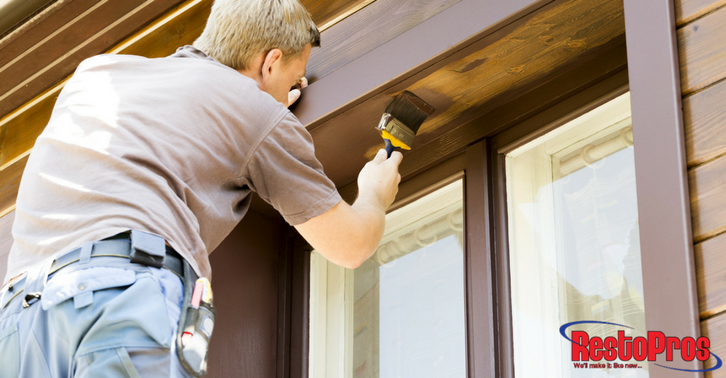 One of the worst drawbacks to needing repairs after home damage (whether it was caused by water, smoke, or mold) is trying to match paint colors to repair walls. It’s difficult enough to match colors on tiny repairs such as removed nails or scratches from wall hangings, furniture, or children, but replacing large patches of paint after repairing drywall in a public room is difficult. For many people, they just can’t seem to get the color to match just right no matter how hard they try. Color-matching is hard, and even experts can have difficulty with it. Lighting, material, and paint-type can all affect the final color and leave you with something that matched right up until it dried.
One of the worst drawbacks to needing repairs after home damage (whether it was caused by water, smoke, or mold) is trying to match paint colors to repair walls. It’s difficult enough to match colors on tiny repairs such as removed nails or scratches from wall hangings, furniture, or children, but replacing large patches of paint after repairing drywall in a public room is difficult. For many people, they just can’t seem to get the color to match just right no matter how hard they try. Color-matching is hard, and even experts can have difficulty with it. Lighting, material, and paint-type can all affect the final color and leave you with something that matched right up until it dried.
How to Match Paint
The best way to match paint for your walls is to keep an original can of the paint. If you painted the walls to begin with, keep an original color swatch or paint can from the initial project. It’s far easier to match a paint sample when you can take the can in to a professional paint mixer to do the color matching in the store. If you don’t have an original can, here’s what you should do:
Match the Type of Paint – Try to find out what type of base paint was used to paint your walls (or any object for that matter. There are minor variations between acrylic, latex, oil, and water paints and if you want a perfect match you’ll need to make sure you’re using the same kind of paint. Otherwise the final product will look different.
Keep Materials Similar – The most difficult color match for older cars is the bumper. When cars switched to plastic bumpers, color matching became extremely difficult. Paint colors dry in a different shade when applied to plastic as opposed to glass, metal, or even drywall. If you can, take in a sample of the material you’re working with and paint it with the new paint to see if it dries the same color. Always use the same material and never assume it will look the same on metal as it does on plastics or wood.

Use Color Swatches – This is really the most important thing to keep in mind. Bring in as many color swatches as you can get. Compare the different colors to the paint on your walls and mark them down. Do not ever buy paint after only a single comparison. You want to test each swatch under different lighting conditions. Ideally, compare the swatch to your paint during the middle of the day, at dusk, and after dark under the same type of light that you use in your home. Light bulbs and sources matter for color display. Most homes use 2700-3000K light bulbs which can change the color of the room when compared to the same wall in direct sunlight.
Once you’ve matched the paint to your wall, don’t just apply it. Test it out on a few materials (preferably any rebuilding materials you have left from the reconstruction). Be sure to clean the area, prime the wall for painting first, and then apply the paint evenly. It’s important to let the paint dry thoroughly between coats. Once you’re done, no one will know there was ever any damage to begin with.
Don’t forget to follow RestoPros on Facebook, Twitter, LinkedIn, and Google+ for new Updates, News, and Discounts
